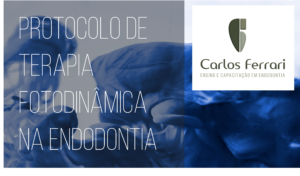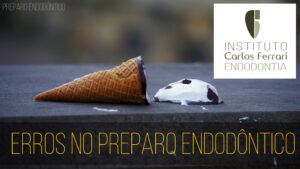Cone beam tomography in endodontics. Part 2. Online Class in Carlos Ferrari Endodontics channel on youtube. Tomography Interpretation.
This third lesson on cone beam tomography in endodontics covers the knowledge for a correct indication as well as discussing the benefits of the tomography indication.
In: Chap. 6. Radiology in endodontics. Ferrari et al. Ricardo Machado. Endodontics. Technical and Biological Principles. Ed. Gen, 2022:
Relevance of the radiographic examination
Endodontic diagnosis and planning
The initial radiograph is the exam that has the greatest potential to provide information for both diagnosis and endodontic planning. To this end, at least two views with different horizontal angulations should be taken. In some cases, vertical angulation is also varied to facilitate the visualization of root apices.
When investigating the state of the pulp, the presence of caries and restorations and their relationship to the pulp chamber should be analyzed. However, a radiolucent or radiopaque image referring to a caries lesion or a restoration, in that order, can be located clinically on the buccal or lingual aspects. Therefore, one should be aware of the fact that the size of the image and its proximity to the pulp chamber are auxiliary diagnostic information. Its correct determination invariably depends on the association of information obtained from the anamnesis and the clinical-radiographic examination. To analyze the periapical state, the thickness of the periodontal ligament and the presence of bone rarefaction should be carefully observed, both in the apex region and on the lateral root surface.
Areas showing thickening of the periodontal ligament or radiolucent areas around the root may indicate bone resorption resulting from pulpal or periapical inflammatory processes. Moreover, one should investigate the occurrence of root resorption that radiographically manifest in various ways, such as apical rounding (typical in teeth subjected to orthodontic movement), irregular images accompanied by bone resorption (external apical and cervical resorption), rounded images inside the root canal (internal resorption) and images demonstrating loss of lamina dura and apparent fusion of the root with bone tissue (substitutive resorption). For more information, we recommend reading Chapter 29, Dental Resorptions: Concepts, Classification and Treatment.
The identification of cracks or fractures by radiographic examination can be extremely difficult. In molars, when the fracture line extends from the buccal to the palatal or lingual surfaces, there is a greater possibility of detection. For planning the endodontic access, the dimensions of the pulp chamber should be analyzed. Special attention should be given to the larger amount of secondary and restorative dentin and to the presence of pulpal nodules, which can hinder the location of root canals. In these cases, interproximal radiographs provide more accurate images of the pulp chamber, and therefore should be requested or performed. Analysis of the furcation dimensions can also be helpful in identifying atrophic canals.
The initial radiographic examination should be even more careful for previously accessed teeth. Perforations, fractured instruments or foreign bodies may be present. Besides the unquestionable technical need for correct diagnosis, planning and endodontic procedures, good radiographs constitute legal evidence in litigation cases. From the initial radiographic examination, one should also analyze the characteristics of the root canals (shape, volume and direction) and the possible existence of extra canals.
Treatment
Periapical radiographs are also essential during the course of endodontic treatment or retreatment, and may be performed to guide the grinding needed to locate the root canal entries; determine the apical limit of instrumentation and obturation during odontometry and core cone testing, respectively; verify the quality of the obturation; and verify the completion of treatment or retreatment. Therefore, a minimum of 5 periapical radiographs are recommended during a conventional endodontic treatment or retreatment.
Proservation
The clinical-radiographic examination is the main method used for the proservation of endodontic interventions (treatment, retreatment and paraendodontic surgery). In general, in vital and necrotic teeth affected by peri-radicular lesions, the goal is to maintain and restore periapical normality, respectively. As is known, the success of endodontic treatment or retreatment is directly influenced by the presence of periradicular lesions. In these cases, there is a need for even more detailed proservations, always considering in an associated manner the information provided by clinical and radiographic exams. Tomography indication





